Wine & Food Issue

Feeding



For more infomation, call 858-720-8250 or visit https://www.msmfamilylaw.com/attorneys/myra-chack-fleischer/ Legal Experts with Humanity







Feeding



For more infomation, call 858-720-8250 or visit https://www.msmfamilylaw.com/attorneys/myra-chack-fleischer/ Legal Experts with Humanity






DINA FAINMAN, MD
Dr. Fainman specializes in general obstetrics and gynecology, birth control options, pregnancy care and childbirth, minimally invasive gynecologic surgery, and hormone replacement therapy and menopause. She speaks English, Spanish and Hebrew.
Scripps Clinic, Encinitas
310 Santa Fe Drive, Suite 204
Encinitas, CA 92024
Call 760-633-7245 to schedule an appointment or visit Scripps.org for more information.



COVER Kailen Sheridan of San Diego Wave Fútbol Club. Photo courtesy Del Mar Wine + Food Festival.
PUBLISHERS
Mark Edelstein and Dr. Mark
EDITOR
Susan Edelstein
ASSISTANT EDITOR
Makayla Hoppe
CREATIVE DIRECTOR
Donna D’Angelo
ARTS & ENTERTAINMENT EDITOR
Eileen Sondak
CONTRIBUTING WRITERS
Emily Bartell, Linda Bennett, Andrea Simantov, Trevor James McNeil, Marnie Macauley, Rabbi Yeruchem Eilfort, Galia Miller Sprung, Micah Siva Lisa McGuigan
CONTRIBUTING ILLUSTRATOR Pepe Fainberg
ADVERTISING REPRESENTATIVES Alan Moss | Palm Springs
EDITORIAL editor@sdjewishjournal.com
ADVERTISING marke@sdjewishjournal.com
CIRCULATION & SUBSCRIPTIONS ronniew@sdjewishjournal.com
ART DEPARTMENT art@sdjewishjournal.com
LISTINGS & CALENDAR assistant@sdjewishjournal.com
SDJJ is published monthly by San Diego Jewish Journal, LLC. Subscription rate is $24 for one year (12 issues). Send subscription requests to SDJJ, 122 15th Street, PO Box 421, Del Mar Ca 92014. The San Diego Jewish Journal is a free and open forum for the expression of opinions. The opinions expressed herein are solely the opinion of the author and in no way reflect the opinions of the publishers, staff or advertisers. The San Diego Jewish Journal is not responsible for the accuracy of any and all information within advertisements. The San Diego Jewish Journal reserves the right to edit all submitted materials, including press releases, letters to the editor, articles and calendar listings for brevity and clarity. The Journal is not legally responsible for the accuracy of calendar or directory listings, nor is it responsible for possible postponements, cancellations or changes in venue. Manuscripts, letters, documents and photographs sent to the Journal become the physical property of the publication, which is not responsible for the return or loss of such material. All contents ©2025 by San Diego Jewish Journal. The San Diego Jewish Journal is a member of the American Jewish Press Association and the Jewish Telegraphic Agency.
San Diego Jewish Journal (858) 442 9922
#SDJewishJournal SanDiegoJewishJournal sdjewishjournal.com



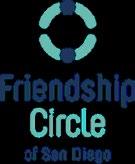

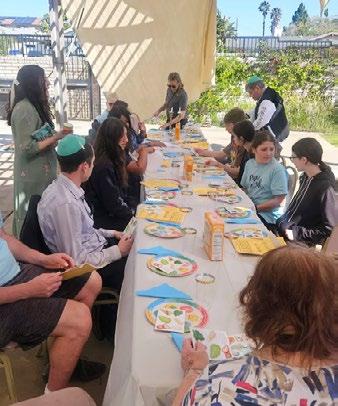




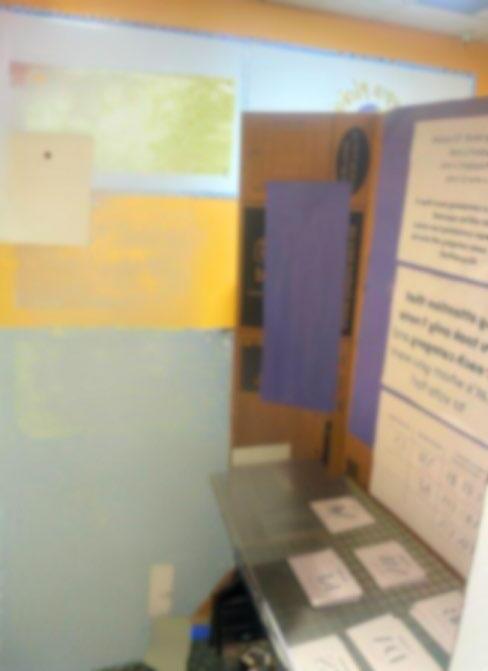




SUSAN EDELSTEIN
In this, our Food & Wine Issue, we are highlighting the sensory experiences of taste, the simple joy of eating, and the connections between food, family and culture. Our bountiful county is home to more than 8,000 restaurants (second only to LA), over 150 wineries and vineyards, and with its more than 150 breweries, San Diego is the county with the most craft breweries in the whole country. We celebrate with festivals all manner of consumables elevating them to great heights to show our appreciation, from Escondido’s tamales to Ocean Beach’s chili, throughout the year, from one end of the county to the other, so there is sure to be something for everyone to go and experience the pure, primal pleasure of eating.
Whether it’s the 3rd annual festival celebrating San Diego’s lifestyle like the Del Mar Wine & Food Festival, or the 28th year of honoring the connection between food and history like the Chula Vista Lemon Festival, San Diegans have a wealth of opportunities to indulge the sense of taste, savor the joy of eating, and connect with others in celebrating our rich agricultural and culinary heritage. And in their effort to ensure that all people can experience the content of a full stomach, we honor Feeding San Diego in their mission to rescue and distribute food to San Diegans experiencing food insecurity.
Pablo Neruda, one of the world’s beloved poets known for his sumptuous descriptions of life’s simplest pleasures, wrote odes to many foods, celebrating the beauty of life’s harvest from onions to artichokes to watermelon, but I will leave you with a stanza from his ode, “A Lemon,” to whet your appetite. A
by Pablo Neruda
Out of lemon flowers Loosed
On the moonlight, love’s Lashed and insatiable Essences, Sodden with fragrance, The lemon tree’s yellow Emerges, The lemons Move down
From the tree’s planetarium
by
Can you believe it, 80 years! The Jewish Community Center celebrated “80 Years of Growing Community
Together” at the Lawrence Family Jewish Community Center on May 31. Held outside on the JCC field, Event Chairs Amy and Adam Jacobs created a truly beautiful evening. With over 500 in attendance, the JCC surpassed their goal of raising $1 million! While wandering around the many food stations, some of those we connected with were Laurie Lynne Barnett, Todd Frank, Julie and Mark Scher, Shoshannah Hart, Ben Schenk, Tammy and Louie Vener, Ilene and Alan Greenspan, Roberta Berman, Taylor Williamson, Jan and Sam Landau, Sharon and David Wax, Lisa and Nate Stein, Monica and Ron Perlman, Taylor and David Israel, Michaela Schenk and Dave Wise, Craig Prater, and the newly engaged Larry Katz and Robin Sassi.
Celebrating the past, present and future, Temple Emanu-El held its annual fundraiser, “Back to the Future,” on May 10. Such a fun evening! They even had the iconic DeLorean time machine on site, driven by Doc Brown. With the success of this year’s event, the congregation’s goal of raising funds for the commission of a new Sefer Torah has put them very close to their mark. Some of those on hand enjoying the evening’s celebration with us were Barbara and Matt Meis, Lisa and Ron Oberndorfer, Benita and Stan Mayer, Rosalyn and Norm Hegler, Randee and Richard Friedman, Jeri and Ira Moskowitz, Hannah and Joe Fox, Sheryl Klein, Lynne and Norman Lurie, Lauren and Michael Sommer, The Hon. Susan Davis and Steven Davis, Andrea Ladmer and Robert Silverman, Donna and Barry Lander, Aimee and Minh Le, Melissa Swann–
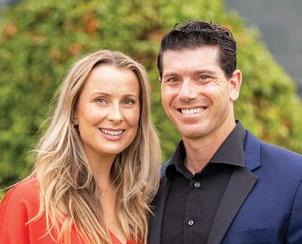
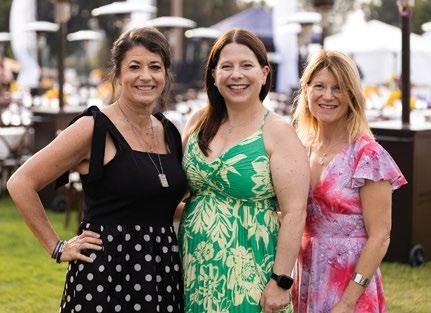
Bloom and Michael Bloom, Joni and Corey Marco, Barbara Learner, and Marcia Berneger
Not to be forgotten... A few months back we attended the Jewish Federation of San Diego’s Women’s Philanthropy, Lion of Judah Luncheon at the Fairmont Grand Del Mar. Co-Chairs, Jill Beck, Melissa Brill, and Laurie Hoshaw, along with their team, truly outdid themselves. The Keynote Speaker, Georgia Hunter, was so inspiring, telling us of some of her family’s wartime stories, which can be found in her book, “We Were the Lucky Ones,” as well as the Hulu Series of the same name. Some of the other ladies in attendance were Susanna Corrigan, Judi Gottchalk, Andie Oster, Shirley Pidgen, Helene Ziman, Lara Woolf Grusd, Elise Sollender, Anne Nagorner, Lori Shearer, Rachel Schindler, and Juli Bear




JCC 80th Celebration
Clockwise, from top left: Event Chairs Amy and Adam Jacobs. Shari Schenk and Sonia Israel celebrate 80 years of Jewish community on the dance floor. (L-R) Board Chair Kira Finkenberg, Lawrence Family JCC CEO Betzy Lynch, and JCC Board Chair Laurie Greenberg.
Mazel Tov to William Rhys Matorin on becoming a Bar Mitzvah at Congregation Beth El on April 26. William’s parents, Dana Greene and Robert Matorin, were beaming with pride along with his grandparents, Roberta and Norman Greene, and older brother, Spencer Matorin
to...
Morris Gold celebrating his 94th birthday. Bob Silverman celebrating his 84th birthday.
with infinite love & happiness, Mazel Tov to… Carol & Harvey Korfin, 65 years.
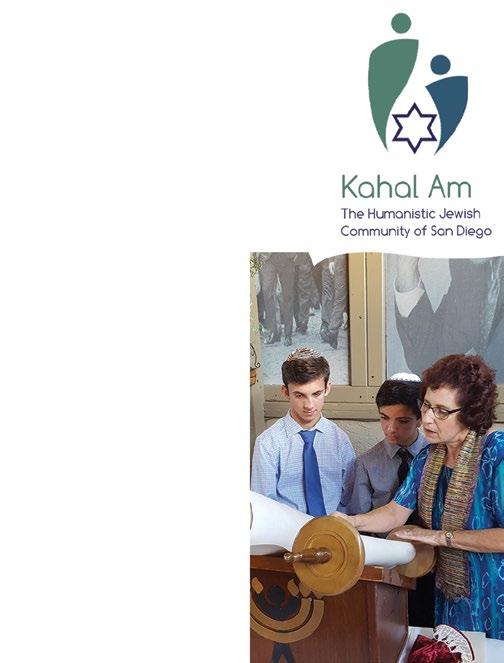




by Andrea Simantov | andreasimantov@gmail.com
Aspecial state of emergency was declared for the entire country, and we’d been warned that Shabbos might be rough.
It was so rough. Our dinner guest came early because synagogue prayer was cancelled by order of the Home Front Command. I lit candles and, with the sky still light, our friend Zeesi came over before dark set in. She hadn’t brought her customary fruit platter from the elegant shop in town because all non-essential activities were forbidden. In lieu, I’d baked a fruit-laced cake without using a recipe, thinking it might serve as an adequate finale to a lovely Shabbat dinner. (Note to self: Find a recipe. The cake was inedible.)
The first missile barrages began during the salad course. Our bomb shelter is four flights down and, not yet inebriated from Shabbat wine or stuffed with challah, my husband Ronney (72), Zeesi (75+) and I (none of your business) skipped down the marbled stairways and took our places with other intrepid neighbors. The crowd included Ethiopians, Russians, Sri Lankans, missionaries and us. Greetings of “Shabbat Shalom” filled the air. Those with cell phones filled us in on what our miraculous air force was achieving. Although we were well underground, we could feel a gentle rumbling outside and, from time to time, hear some distant booms.
We returned to dinner and added liquor to the mix. Just before I served

dessert (the ayatollahs probably knew about my cake), the sirens sounded, and missiles began flying. Ronney and Zeesi, both stalwart and sporty, went all the way down while I cockily sat on the stairs outside of my apartment door. Our border collie was terrified, barking wildly, and I didn’t want to be far. But unlike earlier, these missiles/bombs were shaking the ground and rattling windows, and I suddenly flew down the stairs to get closer to safety. If I wanted to ensure that I made it through the night, better to follow orders from the Home Command Front and not ad-lib survival.
Zeesi didn’t want to stay over, and I walked her to the street. She promised that she would return for kiddush the next morning. Exhausted, Ronney went to the bedroom, and I slept in the living room. Or I hoped for sleep.
Just after 3 a.m., the mightiest of barrages occurred. This time, even Ronney wore fear on his face. As we huddled with others on the lowest floor, he rubbed my head. This small act gave me great strength. We were together, experiencing the unimaginable. Even in this moment, my gratitude to God was immeasurable.
continues on page 15 >>

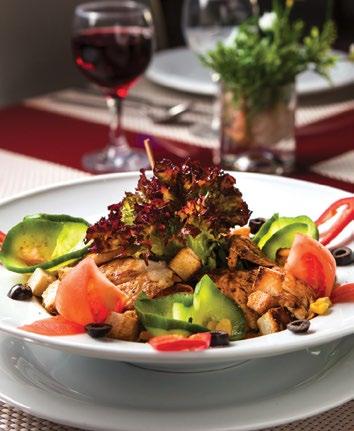

Pursuing your passions, making great friends and cultivating new interests. This is how life unfolds at La Vida Del Mar—an invigorating setting for a life well-lived, with CARF-accredited support if needed. Take the first step in imagining everything your next chapter can hold.
SENIOR LIVING, REDEFINED
Call (858) 330-6086 to schedule a tour or to RSVP for our upcoming event.
Taste of Summer Luncheon | WED., AUGUST 6 th • 11AM
Join us as we celebrate the season with a fresh, garden-inspired menu featuring lemon-herbed chicken skewers, caprese bites, summer pasta salad, fruit sorbets & more. Sip on refreshing mocktails or herbal tea while enjoying classic summer tunes performed by a live guitarist. Please call 858.330.6086 to RSVP.
by Trevor James McNeil tremcneil1980@gmail.com
Some authors are said to be “beyond the pale.” Anzia Yezierska was born in it. Specifically the shtetl of Plock, in the Pale of Settlement in western Russia in 1880. Narrowly escaping the Cossack pogroms, her parents, Bernard and Pearl, fled to the United States when Anzia was 10.
Safely in the States, it wasn’t long until Yezierska would break with her family entirely. Raised in a strict Jewish Orthodox fashion, around the time when Reform Judaism was still becoming an option, Yezierska refused to stay in the limited role her parents wanted to force her into, and she left home when she was 20, a year before she would have been a legal adult.
Initially taken in by the non-sectarian Clara de Hirsch Home for Working Girls (who didn’t care that Yezierska was Jewish even in that vehemently antisemitic era), Yezierska studied what was then called “domestic science.” Ironically excelling in this role, she would teach Home Economics at public school.
Encouraged by her sister, Yezierska started to pursue a career as a writer. Like most things in her life, writing didn’t come without struggle. But, as usual, she got through with talent and hard work, publishing her first short story, “The Free Vacation House,” in 1915. A firm believer in “write what you know,” Yezierska rivals Charlotte Bronte in terms of stark, sometimes harsh, realism. Many of her stories, characters and details are drawn directly from the
A firm believer in ‘write what you know,’ Yezierska rivals Charlotte Bronte in terms of stark, sometimes harsh, realism.
environment of New York’s rough Lower East Side at the turn of the century, giving her fiction an added element of documentation of a previous period, despite being intended to be entirely contemporary at the time. The story was a modest success, and she published a second titled “Where Lovers Dream” in 1916 in the popular Metropolitan magazine.
Slow but steady, Yezierska’s writing career got a massive boost in 1919 when she won the Edward J. O’Brien Award for Best Short Story of the Year. Her first collection, titled “Hungry Heart,” was published by the legendary publishing house Houghton Mifflin in 1920.
Staying steady with her output, Yezierska published her first novel in
1922. Getting even more sardonic than in her short stories, the book was titled “Salome of the Tenements.” Something close to biographical fiction, the story follows a Jewish immigrant woman living in a poor area of New York. Things deviate from Yezierska’s own story with the added twist that the protagonist, Sonya Vrunsky, wants to marry a wealthy protestant to escape her humble beginnings in the ethnic ghetto. The story is also mostly based on the life of Yezierska’s real-life friend, Rose Pastor Stokes, lending the narrative an element of reality.
The reception to “Salome of the Tenements” was mixed at best, the nicest of the negative reviews coming from The Nation, which tactfully called the novel “unwholesome.” Others refer to Sonya as “an illiterate, hot-blooded little savage.” One of the few positive reviews came from the historian James Harvey Robinson, who praised Yezierska for her nerve in terms of calling out many at the time as hypocritical moralizers, especially those who clutched their pearls and popped their monocles at Sonya’s “modern woman” presentation. Continuing to write short stories while also working on “Salome…”, Yezierska published her second short story collection with “Children of Loneliness” in 1923. Staying to a consistent publishing schedule, Yezierska’s next full-length novel, “Bread Givers,” published in 1925, also has a whiff of reality, much like “Salome of
Literature continued Israeli Lifestyle continued
the Tenements.” It follows Sara Smolinsy, the 10-year-old youngest daughter of an Orthodox Jewish family living in a New York tenement. Also based around individualism and survival, Sara is forced into the position of making money by selling fish at a market when her father, Reb, is arrested for slapping a rent collector. More of an antagonist than the landlord, Reb is the one who causes most of the problems for the family, and Sara carefully plots her escape.
During this period, she also had a brief but successful career in movies, with there being screen adaptations of “Hungry Hearts” and “Salome of the Tenements” produced by Metro-Goldwyn-Mayer and Paramount Pictures, respectively.
Between 1927 and 1932, Yezierska published two more novels, “Arrogant Beaver” in 1927 and “All I Could Be” in 1932. Taking a long break that could almost be considered a semi-retirement, Yezierska didn’t return to published writing until 1950 with the directly titled “Red Ribbon on a White Horse: My Story,” which is properly described as an “autobiographical novel.”
Despite dying in 1970 at the age of 90, it didn’t greatly impact her output with two posthumous releases, “The Open Cage: An Anzia Yezierska Collection” in 1979 and a final collection of short stories titled “How I Founded America: Collected Stories” published in 1991, roughly 20 years after her death. A
Growing up in the far north, Trevor James McNeil had little to do other than read when the temperature went below 40 Celsius, and he developed an affinity for stories of all sorts. Graduating from the University of Victoria in 2009, he has been reading and writing in a professional capacity since. He lives in a cabin in the woods with his dog, and firmly believes The Smiths would have been better as a trio.
Finally, asleep on the sofa at about 4:45 a.m., I heard/felt an enormous trembling of the building, the windows rattling something fierce. Apparently, a huge attack was underway, too far off for the sirens to alert us in Jerusalem. It was the most prolonged bombing I’d experienced. I did what I wasn’t supposed to do — walked to the balcony and looked out, the pre-dawn sky streaked with missile vapors.
And this morning, my son returned to fight in Gaza.
Looking only at the trees, the story is scary, and my hopes lie with men and women in leadership who are tasked with our safety. But then I look at the forest. We who are blessed to live in the Holy Land at this moment in time are sitting in the front row of prophesied Jewish history. Our role has been decreed, and, whether foolish or undeniably brave, we are imbued with unwavering faith as we take up the gauntlet toward our ultimate — let it be soon — redemption. A
New York-born Andrea Simantov moved to Israel 29 years ago. She is a small-business owner and both a print and media journalist. Her popular podcast, “Pull Up a Chair,” is produced by Israel News Talk Radio. She can be reached at andrea@israelnewstalkradio.com.
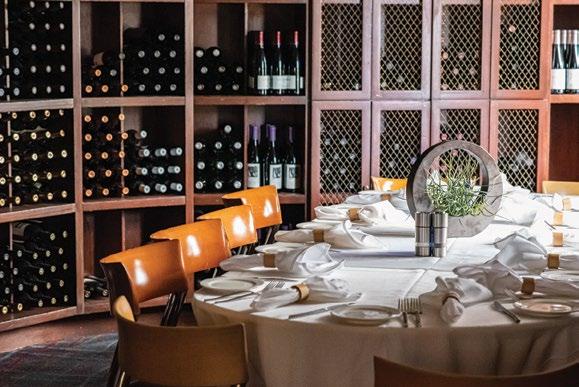

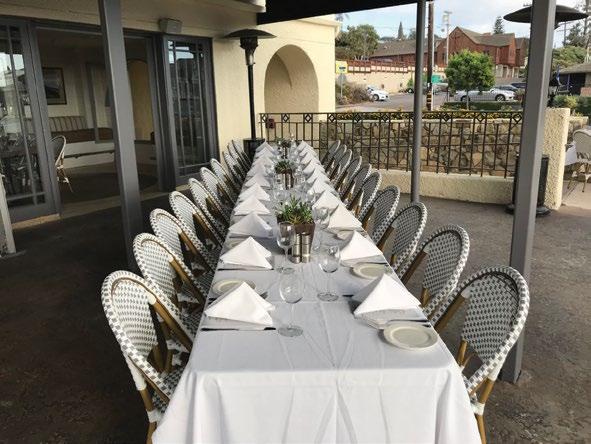

hold your next special occasion at pacifica
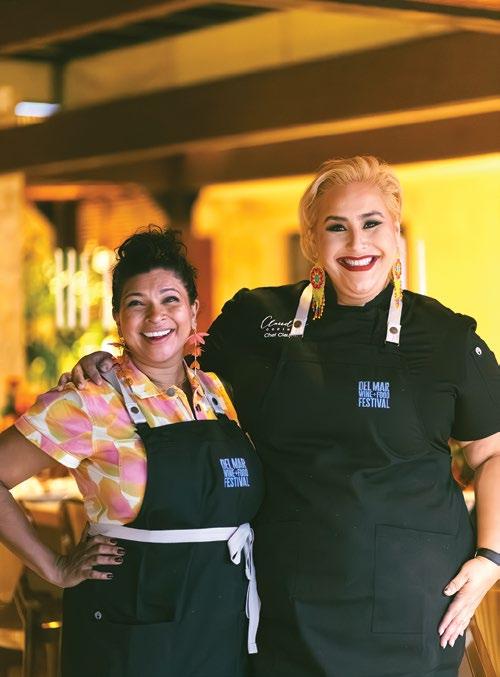

by Susan Edelstein
It’s almost that time of year — get ready for the third annual Del Mar Wine + Food Festival coming September 10-14. This festival is a unique collaboration among San Diego’s culinary stars, top winemakers and professional athletes “to showcase flavor and raise a glass to San Diego’s signature blend of outdoorsy ambition and serious indulgence.” The list is a cross-border group of Michelin-starred chefs and the stars of Food Network, Top Chef, Master Chef Latinos and more.
Founders and hosts are Chris Finn, a 15-year veteran of the food and wine festival circuit, and Troy Johnson,
a national award-winning food writer and Food Network personality. In regards to the vibe of this festival, Troy Johnson said, “DMWFF is all about celebrating the people and experiences that make San Diego what it is. The goal has never been to create a whitetablecloth kind of event. It’s a festival for locals, by locals, where everyone’s invited to eat, drink, move, and connect in a way that feels true to the city.”
Chris Finn elaborated, “I think the best festivals start with the goal to be authentic in nature. Before launching Del Mar Wine + Food Festival, our team discussed the direction of where we
wanted to take it and our vision for it. The underlying theme of this festival is celebrating San Diego and the Southern California lifestyle while spotlighting the food, wine and culture that people know and love.”
The pro athletes bringing their own special talents and fans to the festival are international soccer superstar Alex Morgan, NFL legend Drew Brees, and pro-surfing icon Rob Machado. Together, they are reinventing food festival culture with their outdoor venues and sports emphasis, and their collaboration has earned DMWFF a spot among the “Best Food Festivals of 2025” nationwide.
When asked how DMWFF, the only one of its kind to feature professional athletes, managed to bring Alex Morgan, Drew Brees and Rob Machado together for this event, Troy said, “DMWFF’s blend of sports and culinary culture felt like a natural extension of who we are as a city. The idea came from looking at what makes San Diego, San Diego. Sports, wellness, and active, outdoor lifestyles
are core to how people live here. We’re a city of surfers, runners, hikers, and weekend warriors. So we thought, what if we built a food and wine festival that reflects that energy? Bringing in athletes like Alex Morgan, Drew Brees, and Rob Machado was a no-brainer — they’re deeply passionate about food, wellness, and community. Through that shared vision, the synergy happened naturally.
“The idea came from looking at what makes San Diego, San Diego.”
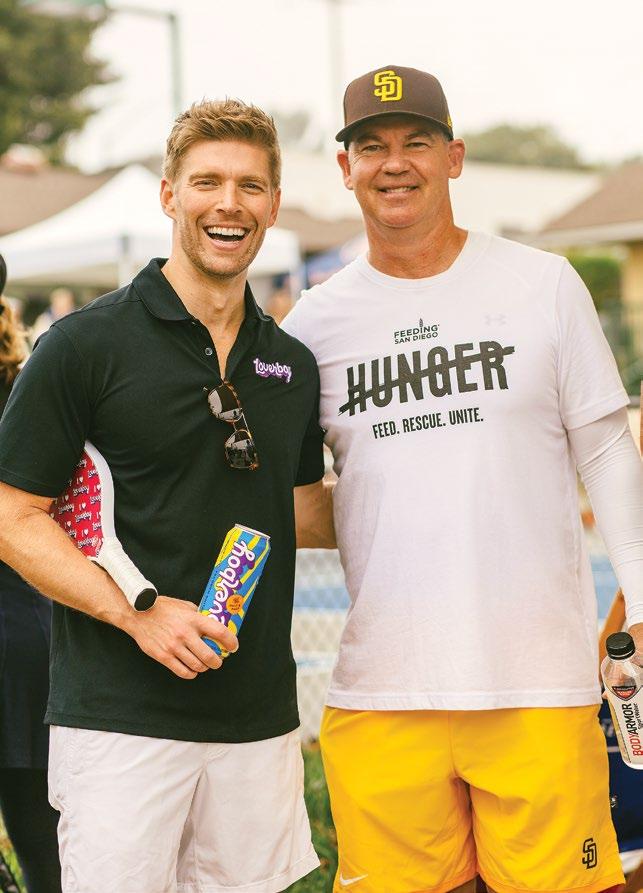
All three have roots here and are San Diego residents. While they all come from different corners of the sports world, they share a deep connection to the city and its lifestyle, which made teaming up for DMWFF a natural fit.”
Describing the vibe among San Diego’s many chefs, vintners and cocktail creators, Troy stated, “There’s a real sense of camaraderie throughout San Diego’s food and drink scene built on mutual respect, creativity, and a shared love of hospitality. Chefs, restaurateurs, winemakers, brewers, and bartenders here are in it for the right reasons: to create memorable experiences, connect with their community, and support each other.”
With such a large, vibrant food community, how do chefs and others choose which festivals to support or participate in? Said Troy, “With so many great events out there, choosing where to get involved often comes down to alignment — does it reflect their voice, their city, their community? Built for San Diego, by San Diego, DMWFF checks those boxes. It’s not curated for one type of restaurant or cuisine; instead, it celebrates the full breadth of the region’s food and drink scene. A chef-driven, mission-forward lifestyle celebration that’s laidback and fun, but intentional.”
The opening night party will be hosted by San Diego Football Club on Sept. 10 at Monarch Ocean Pub in the Del Mar Plaza, where guests can meet and mingle with SDFC team members. Another highlight is the Drew Brees Pickleball Tournament on Sept. 12, where participants and spectators will indulge in spectacular food and beverages throughout the day. Troy elaborated, “As our biggest pre-festival event, the tournament takes over the Barnes Tennis Center in Point Loma and offers plenty of ways to get involved. From joining in courtside as a spectator to participating as a recreational player, tournament player, or pairing up with a celebrity or pro athlete doubles partner.” continues on next page >>
Del Mar Wine + Food continued
The culminating two-day event will occur on Saturday and Sunday, Sept. 13 and 14, and bring together more than 100 restaurants and 150 wine, spirits and beverage producers to Del Mar’s eightacre, open-air Surf Sports Park. This is the festival’s signature event celebrating community, culture and flavor.
The festival proudly supports Feeding San Diego, the city’s leading hunger relief and food rescue organization and has raised more than $75,000 in support of this remarkable group.
In addition to its partnership with Feeding San Diego, this year’s festival will also support a range of community causes, including Big Queer Food Fest, honoring LGBTQ+ culinary excellence; San Diego Magazine’s Celebrating Women, spotlighting changemakers across industries; and a partnership with the Alex Morgan Foundation, which champions equity for girls in sports, education and leadership.
Explaining its support for these groups, Troy said, “At its core, DMWFF is about bringing people together and championing our whole community in a meaningful way. We’re passionate about spotlighting our local changemakers — the individuals and organizations working every day to make San Diego more inclusive, equitable and connected. We’re continually inspired by the women and LGBTQ+ voices leading with purpose, the boundary-breaking cross-border collaborators, and wellness innovators shaping a community-built future. We strive to amplify their voices, uplift causes that matter, and use our platform to do more than throw a good food party.”
DMWFF is a celebration of our region’s vibrant culinary scene and iconic active lifestyle, set against the lush coastal backdrop of Del Mar. Said Chris, “Beyond great food and drinks, we aim to create a vibe that resonates with locals and those drawn to the Southern California lifestyle.” A

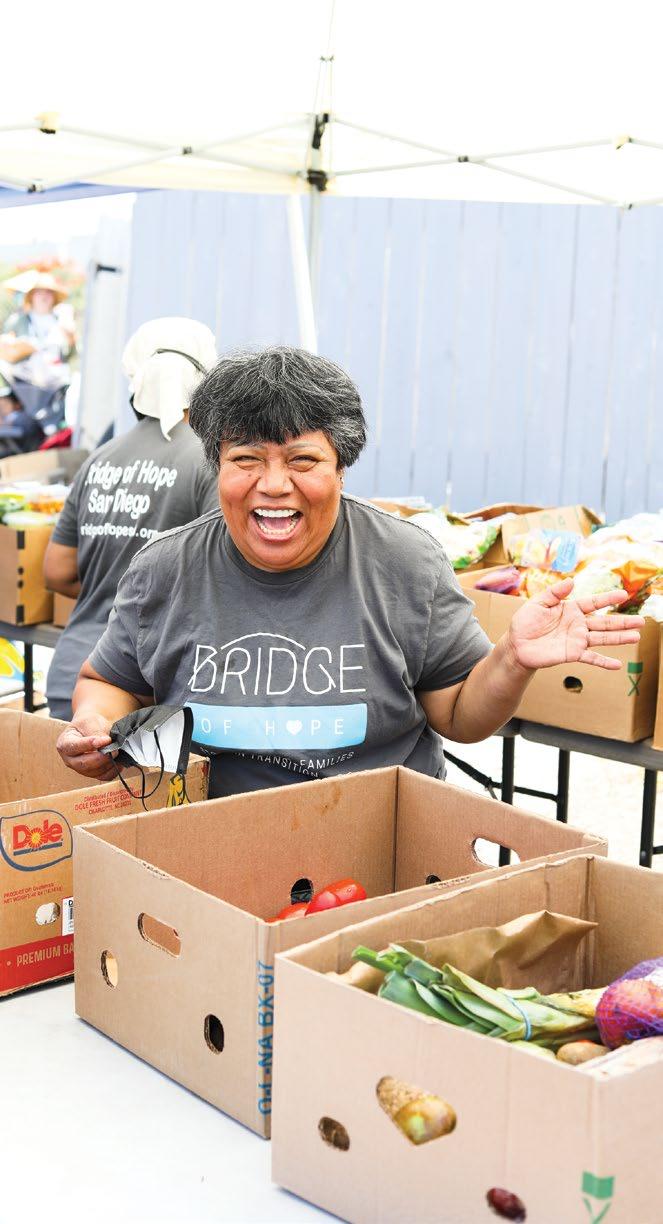


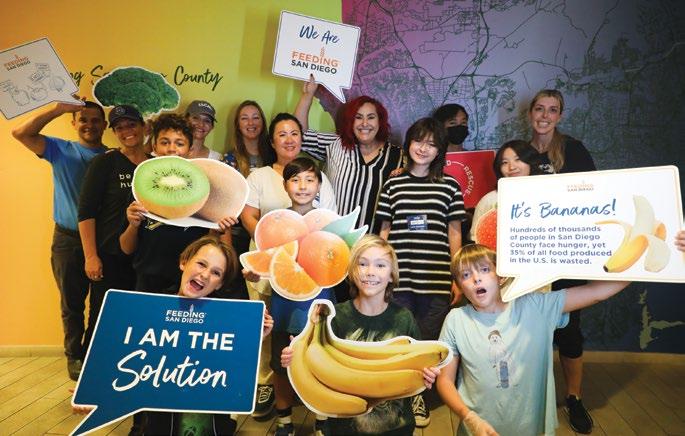

by Susan Edelstein
Feeding San Diego, the region’s leading hunger-relief organization, was established in 2007 with a mission to bring food to people facing hunger in San Diego County through food rescue. An enormous and noble cause — rescuing food to help rescue people.
Feeding San Diego (FSD), through a fleet of vehicles, a slew of warehouses, and a legion of volunteers, rescues surplus food from being tossed in a landfill and distributes it throughout the county. FSD has more than 800 donors, including 50 farms, from which they collect fresh, nutritious food every day.
Last year, FSD delivered 29 million meals to children, families, seniors, college students, military families, veterans and people facing
Last
year, FSD delivered 29 million meals to children, families, seniors, college students, military families, veterans and people facing homelessness.
homelessness. Its distribution partners are a network of more than 300 local charities, schools, colleges, faith communities, healthcare providers, meal sites and food pantries.
Feeding San Diego’s first distribution was held in October 2007 in the San Diego Rescue Mission parking lot. Today, FSD has a 50,000-square-foot warehouse facility, distribution center and marketplace in Sorrento Valley, as

well as many walk-up (please bring your own bag) and drive-through (we’ll put the box in your car) distribution locations throughout the county.
Of the food distributed by FSD in 2024, 92% was rescued, meaning more than 31 million pounds of food was diverted from the landfill, reducing harmful greenhouse gas emissions.
Feeding San Diego: rescuing the people and the planet. A

by Makayla Hoppe

In the early 1900s, San Diego settlers could purchase land in Chula Vista for $300 per acre. But that land came with a stipulation: you had to grow lemons. By the 1920s, Chula Vista would be known as the “Lemon Capital of the World.”
Although the industry declined due to urbanization and World War II, many lemon trees can still be found in backyards and parks all over the city. Chula Vista fondly looks back on its history by honoring it with the annual Lemon Festival.
“The Lemon Festival started in 1997 as a way to pay homage to Chula Vista’s past,” said Jacob Rocha, Director of Business Operations at Fuse Events, “when lemon orchards and groves were bountiful in the area.”
This year’s event will take place on Saturday, Aug. 16, from 11:00 a.m. to
The food is one of the biggest draws of the festival, with San Diego businesses lining up to showcase their savory, sweet, tart, and tangy lemon dishes.
6:00 p.m. in Downtown Chula Vista. The roster of live music, competitions, food and fun will be sure to delight residents from all over San Diego.
“Live music from some of San Diego County’s top musical acts will be performed on two stages on the north and south ends of Third Avenue,” Jacob said, “including Mariachi, local DJs and bands. Acts include the Anthony Cullins Band, Kimba Light, Santana Soul, Mariachi Dinastia and more.”
The food is one of the biggest draws of the festival, with San Diego businesses lining up to showcase their savory, sweet, tart, and tangy lemon dishes. Don’t forget to check out all the different lemonades.
“Some of the many food vendors are: Dream Drinks, It’s In the Filling, Lemon Drop Pastry Shop, Mama V’s Lumpia and Rosales Mexican Food,” Jacob said.
For the past three years, a major highlight of the festival has been the Lemon Cook-off Competition. Local
eateries develop unique and enticing lemon-themed dishes to be presented to a line of judges.
Previous years’ winners include Mmm… Cakes and their Lemon Chicken Danish in 2022; Grind House and their scallion and chicken waffle with charred green onion and lemon sauce in 2023; and Mmm… Cakes again with their lemon pepper chicken waffle sliders, soaked in a buttery lemon sauce in 2024.
Keep your ear to the ground, because 2025 might be switching things up with a lemon pie-eating contest in place of the Lemon Cook-off Competition. Details will become available closer to the event.
The festival will also feature a special area just for kids, known as The Little Lemons Kids Area, located at Memorial Park.
“[The area] consists of fun, kidfriendly interactive projects and
activities, community partners that benefit kids, and massive inflatable rides for kids of all ages!” Jacob said.
Bright yellows and greens will dazzle guests this year with the Best Dressed at the Lemon Fest, a lemon costume competition. Bring out your colorful summer attire for a chance to take home the prize.
Other activities include an arts and crafts area for all ages, which will feature live chalk art by professional chalk artists and Sour Power, an “interactive project where lemons are used to power an electrical circuit, presented by San Diego Community Power.”
For 28 years, the Chula Vista Lemon Festival has brought together residents from all over to honor a memorable part of San Diego’s history. The event is a celebration of summer fun, good food, a welcoming community and so much

more. Take a day trip this August to enjoy all the tasty and entertaining treats that Chula Vista has to offer. A
Visit downtownchulavista.com/events/lemonfestival for updated information and details.
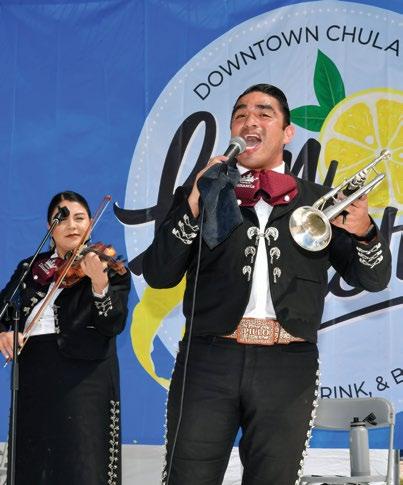
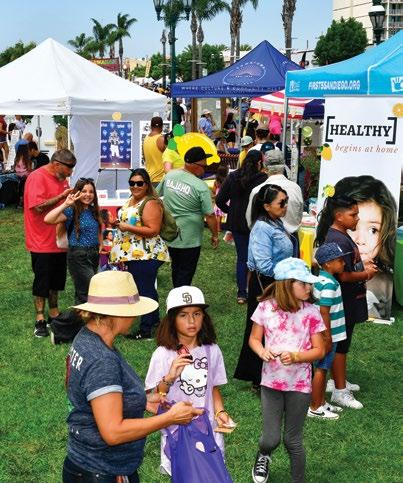


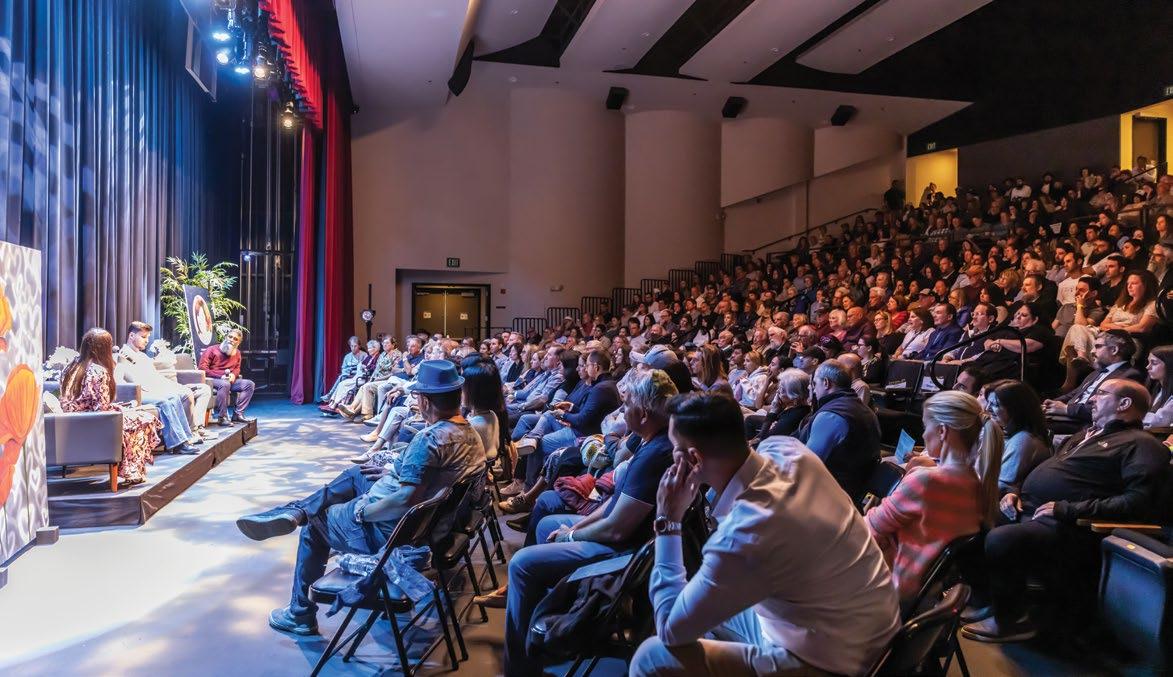
by Rabbi Yeruchem Eilfort
Sasha Troufanov and Sapir Cohen were kidnapped and brutalized by Hamas terrorists on Oct. 7, 2023. Sasha’s father was murdered, and Sasha himself was shot in his leg, stabbed in his shoulder, and had his head split open. Sapir was threatened and abused in ways we don’t want to even imagine, much less describe.
Both were held in conditions that defy the imagination for an extended period — Sasha for more than 500 days. The tunnels in which they were held challenge meaningful description. Humane people wouldn’t keep an animal in such surroundings. Continual
penetrating dampness led to mold, making it nearly impossible to even breathe. Bed bugs and lice abounded. Sasha, having been badly wounded, was left suffering for over a week before being brought to a hospital for treatment, despite his agony or perhaps because of his agony. He was essentially held in solitary confinement for the duration of his imprisonment.
Sapir entered her captivity actively seeking G-d, speaking to G-d regularly, and with a deep and abiding faith in Him. What she largely lacked was a purpose and direction in life. She didn’t know why she was here. She didn’t feel fulfilled.
As for Sasha, he didn’t believe in Divine Providence. As an electrical engineer, he felt people manufactured their own ‘luck.’ His life experiences had taught him that the more he planned, the better outcomes he could expect. That was his winning formula for professional success. He felt confident in his ability to control his destiny. Beyond that, while he respected people’s rights to their religious practices, he did not want those practices to infringe on his life. He would tolerate kosher observance around him, but Shabbos observance and its ‘strictures’ made him decidedly uncomfortable.
continues on next page >>

Chabad of San Diego hosted an evening with Sasha and Sapir in the JCC theater. It was packed — standing room only. Every one of the 500+ seats was full, with many additional chairs set out for the overflow crowd. The event started precisely on time — perhaps a miracle by Jewish standards, according to Betzy Lynch, CEO of the JCC.
Rabbi Yonah Fradkin, Regional Director of Chabad of San Diego County and its 30 centers, introduced Sasha and Sapir and thanked them. He told them that they are symbolic of Jewish love, unity and strength, as well as resilience. Rabbi Fradkin then turned his attention to the crowd and explained that Chabad is here to inspire Jewish people and help them achieve growth and meaning in their Jewish journey. It is for that reason the Chabad Hebrew Academy exists, sponsors such events, and continues to grow. It is why new Chabad centers continue to be opened county-wide.
What followed was stunned silence, perhaps another miracle by Jewish standards, as Sasha and Sapir were interviewed by Rabbi and Rebbetzin Motte and Sarale Fradkin. Not a peep could be heard as the story unfolded,
save during the numerous ovations. It was a story of unsought heroism, perseverance, deep psychological insights into the mind of an implacable and brainwashed enemy, and astounding conclusions reached in the most unlikely of circumstances.
Sapir helped the young girl, and in a way herself, by using a combination of tools to endure and survive. When they found out that their captors were going to move them to another location in Gaza, the young girl’s terror increased dramatically. Sapir quipped, “This (the tunnels) is what Gaza is famous for; let’s check it out!” Sapir found that by relieving some of the worry in her fellow captive, she felt somehow lighter and had a bit of hope.
Sasha emphasized that he did not come to believe in G-d because he survived the ordeal. He came to his conclusion in the midst of his ordeal.
Sapir related that for the early part of her captivity, she was together with a 16-year-old girl who was justifiably terrified. It is not that Sapir wasn’t terrified, but she came to understand that this young girl needed her in a way that she had never been needed before. Maybe she had found her purpose? She came to feel that her mission in life was nothing short of working tirelessly for Jewish unity.
In fact, Sapir told the audience about a dream she had where she was in a gym wearing a backpack. The backpack was so heavy that no one else could lift it. When asked what was in the backpack that made it so heavy, she replied that it was filled with her experiences. She concluded that only she could carry the backpack, but that when others showed her love and support like she was feeling in great abundance in the theater, it
somehow made the backpack and its burden more bearable.
Sasha made an amazing discovery while in the terror tunnels. He discovered G-d. One thing he had in abundance was time to think. He constantly thought about ways of convincing his captors that he was a human being. He learned Arabic by listening closely. He engaged in conversations with the terrorists. He assured them that he would not ‘give them any trouble,’ putting them at ease and making them more approachable. But he also thought again about his chosen profession of being an electrical engineer. He analyzed, for the first time in his life, that as an engineer, he
Sasha emphasized that he did not come to believe in G-d because he survived the ordeal. He came to his conclusion while in the midst of his ordeal. In the darkness of the terror tunnels, his eyes were fully opened. He worked on his relationship with the Almighty. He started to pray. He asked G-d for the opportunity to serve Him freely. True to his resolutions, immediately upon his release, Sasha prayed to G-d. For the first time in his life, he put on tefilin and has put them on daily since. His mother, may she live and be well, embraced Jewish practice vigorously. Instead of skepticism, Sasha responded with encouragement and intense Jewish pride. Sasha strongly
injuries was he eventually freed. What he originally considered a curse turned out to be a blessing, disguised as it was. Sasha and Sapir are living miracles. Not only because they survived a living hell in the hands of terrorists but because they both came through the ordeal with positive attitudes. Their ability to simply smile is miraculous. Instead of turning their backs on a humanity that could produce such inhumanity, they have embraced that which is human in each of us. They are dedicating their lives to inspiring the rest of us. If they could survive with such positive attitudes, how can we do any less? A



by Galia Miller Sprung
There is a popular song in Israel about ordinary people with ordinary jobs who become superheroes. The refrain in Tikva 6’s song “Giborei Al” (Superheroes) says it all:
Hey,
It’s true that everyone here looks normal — but,
We are a nation of superheroes. In each of us, there is always a soldier hidden,
Ready to save the world.
Yes, our soldiers are heroes. But when Israel was attacked on Oct. 7, heroism didn’t require a uniform. Ordinary citizens rushed into the firefights and killing fields. They endangered their
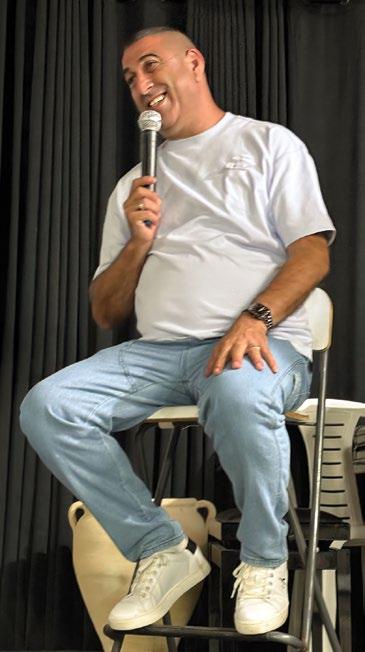
own lives — and many were killed — to save others because this is what had to be done. After rescuing one, two or more people, ordinary citizens returned again and again to the Nova death zone to search for more survivors hiding in wadis, fields or the underbrush. I met one of these daring rescuers recently, Rami Davidian, a 60-year-old farmer and fuel distributor from Moshav Patish. He recently spoke at a community near me. Why did we all go and fill up the seats in the hall? We are Israelis. We lived through those awful days. We’ve seen horrific pictures — or at least heard depictions of scenes we wish we could unhear. We’ve listened to interviews in the media. We already
know what happened. So why go? I think I just had to see him up close and personal — unfiltered.
There is electricity that hums through you when you listen to the hero himself, looking closely at the man in the white T-shirt, jeans and white sneakers. When you sense his heroism and his trauma, the actual words are secondary. The depth of the story, fears, urgency and profound sadness were in the tilt of his head, the occasional choked word and the tear that never fell.
Rami is a national hero. He was chosen as one of the Torch Lighters for Israel’s 76th Independence Day ceremony. Rami saved — was it dozens or hundreds of Nova festival attendees on
Rami saved — was it dozens or hundreds of Nova festival attendees on Oct. 7? No one knows for sure.
Oct. 7? No one knows for sure. But the saying resonates: “He who saves one life saves the world entire.”
With no introduction, Rami strolled confidently onto the stage. He picked up the microphone and a remote for the slide show, sat down and said, “Good evening.” A trap door opened, and we plunged into the abyss of Oct. 7. Rami led us through his timeline of that day. We were with this man of solid build and cropped hair when he left his home on Moshav Patish because he got a phone call asking him to rescue the daughter of a friend’s friend who was at the Nova party. Not even anyone he knew personally. Despite the sirens and rockets, Rami set out. He was used to sirens and rockets coming from Gaza, only 12 miles away. But he wasn’t prepared for what he saw: two mangled bicycles and severed fingers on the ground. “I thought it was from a car accident,” Rami said too calmly. Click of the remote, and we saw the bicycles and the gloved hand of a bicycle rider on the screen. No words needed.
He continued on his mission to find the girl. But he saw a white van with smoke coming out of it. He stopped to see what had happened and found dead bodies in the van. They had been shot. He was beginning to realize that “something very wrong” was going on.
Watching Rami slip back into that day needed no translation. He stared at the computer, barely breathing as the saved WhatsApp messages from that day scrolled continuously on the screen. Messages among those in hiding spread quickly — someone named Rami was out there looking for them. Rami’s number was their hope.
“Rami, save me!”
“Rami, my son is hiding in the trees
south (or north or east or west) of the Nova. Please rescue him!”
And he usually succeeded. Rami’s bravery and intimate knowledge of the terrain — and his fluent Arabic — were key factors in his ability to find and rescue so many souls. He took chances others couldn’t. He was born on Moshav Patish and spent his youth riding his bicycle in every ravine, grove and field in the area.
him because she would slow them down. They handed her over and ran.
Click — audio recordings played. Frantic relatives begging Rami for help. No need to understand the words. The cries and intensity of anguish and despair are universal. He started to describe a scene I won’t repeat. He stopped mid-sentence. Lips tightly closed, head tilted back. Alone on the stage, he struggled to control the sadness and horror attacking him from within. We stopped breathing. Rami was somewhere he never should have been. No one should have been. We waited. I was afraid. Afraid he wouldn’t come out of it. But he did. Pulling from the depths of courage and strength that he still has.
There was a stunned silence. No coughs, no murmurs. No movement. We were still with the daring rescues, with his encounter with terrorists, with the families of those he couldn’t save.
“Tell me what the tree looks like,” he might ask. He knew the terrain.
Then he told us the story of Amit, a young woman already in the hands of terrorists. Rami reached the site and in his calm, soothing voice so reassuring to frightened victims, confronted the six terrorists, greeting them like a brother.
“I don’t know where I got the strength to face the terrorists,” Rami said, “but I had to rescue her. I spoke to them nicely in Arabic. I asked how they were doing. I told them my name was Abu Rami and that I was a Muslim.”
Rami’s dark features helped sell the story. He told the terrorists that the Israeli army would reach them in a few minutes, and they all had to get away. Fast. He convinced them to leave “the girl” with
Click — footage of newsreels with Rami on Oct. 7 still in the fields of the Nova. Click — a picture of four frightened young women lying on the ground, hiding from terrorists, begging for rescue. Rami found them. Click — video from Rami’s dashcam. We were driving alongside an IDF tank that needed directions to get to one of the kibbutzim under attack! Chaos.
Rami’s voice was low and soft, his energy depleted, but not his spirit. He often referred to himself in the third person. Another few clicks, and we saw some of the young people Rami saved. Rami not only rescued people, but he also organized members of his moshav, his family and friends to help in the
efforts. A coordinated rescue mission. Rami didn’t return home for 48 hours.
“Any questions?” Rami asked before we realized the presentation was over. There was a stunned silence. No coughs, no murmurs. No movement. We were still with the daring rescues, with his encounter with terrorists, with the families of those he couldn’t save.
One person broke the spell. “Rami,” she said, “You often referred to yourself in the third person. Why is that?” I had noticed that in many of his interviews over time.
“Yes,” he said in acknowledgment. “We’re working on that in therapy.”
I later looked it up. It is common for victims of trauma to talk about their experiences in the third person to distance themselves from the trauma
and allow themselves to take control of events. The speaking events survivors are invited to are also therapeutic.
“School kids ask more questions than you guys!” Rami said in an attempt to lighten the mood. It worked. We laughed, but the weight of the evening lingered.
My soldier granddaughter, O, was with us in the first row of the hall where Rami spoke. She had come from her base in the south and was still in uniform. Her sergeant’s stripes on her sleeves, her braided gray srochim (aiguillettes) and insignias revealed her army role.
When Rami walked off the stage, he came towards us. A hero is drawn to another hero. She’s a soldier, and that’s hero enough for all of us. O surprised Rami by telling him that she works with his daughter. Although Rami’s daughter

is married with children, their paths touch through O’s army duties. Rami didn’t hesitate. “Why haven’t you come over for dinner?” Then, without waiting for an answer, he said, “Now you’ll have to.”
And just like that, Rami was back to being a simple farmer, a family man, inviting a soldier serving nearby over for a home-cooked meal. A
Galia Miller Sprung moved to Israel from Palm Springs, California in 1970 to become a pioneer farmer and was a founding member of a moshav in the Jordan Rift Valley. Today she is a retired high school teacher, a writer and editor. She lives with her husband in Tzufim.

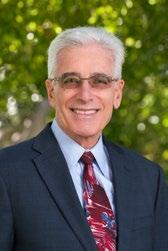
Phil Bresnick Portfolio Manager
Senior Vice President | Financial Advisor 101 West Broadway, Suite 1800 San Diego, CA 92101 619-668-4334
philip.bresnick@morganstanley.com advisor.morganstanley.com/the-bresnick-group CA Insurance Lic. #0A05261 / NMLS #1401662



D a t e s :
R O S H
H A S H A N A :
2 2 - 2 4 S E P T
Y O M K I P P U R :
O C T 1 / 2
S U K K O T :
O C T 6 - 1 3
S H E M I N I
A T Z E R E T A N D
S I M C H A T
T O R A H :
O C T 1 4 / 1 5
W I T H A C H A B A D C E N T E R N E A R Y O U ! B " H T H E
"May You be Written and Sealed in the Book of Life!"
* U s e r - F r i e n d l y H e b r e w / E n g l i s h P r a y e r
B o o k s
* M e m b e r s h i p N O T R e q u i r e d
* R e s e r v a t i o n s R E Q U I R E D
* N o T i c k e t s ; D o n a t i o n s O p t i o n a l ( b u t
a p p r e c i a t e d )
* J o y f u l & C o m f o r t a b l e A t m o s p h e r e
* E v e r y o n e W e l c o m e
T H E R
B A D C E N T E R N E A R Y O U !
W e h a v e l o c a t i o n s a l l o v e r S a n D i e g o !
S c r i p p s R a n c h ( C h a b a d S . D i e g o H Q ) ,
B o n i t a , C a r l s b a d N o r t h , C a r m e l V a l l e y , C h u l a V i s t a , C o r o n a d o , D o w n t o w n ,
E a s t C o u n t y , E n c i n i t a s , E s c o n d i d o , L a
C o s t a , L a J o l l a , N o r t h C o u n t y I n l a n d ,
O c e a n s i d e / V i s t a , P a c i f i c B e a c h ,
P e n a s q u i t o s , R a n c h o S . F e , S D S U ,
T i e r r a S a n t a , U C S D , U n i v e r s i t y C i t y
V i s i t C h a b a d . o r g / H i g h H o l i d a y s
t o f i n d y o u r l o c a l
C h a b a d J e w i s h C e n t e r & t o l e a r n
m o r e a b o u t t h e H o l i d a y s
H i g h H o l i d a y s

If you still have a nearly empty jar of horseradish in your cupboard from Passover, make this salad! Beets have a long growing season, with spring and summer beets being sweeter and more delicate in flavor than the coolerweather crops. I love using a combination of red, golden, and even candy cane-striped beets for a visually appealing salad. This dish can be prepped in advance, and simply pan fry the paneer cheese before serving. You can substitute paneer for halloumi if preferred.

by Micah Siva | noshwithmicah.com
• 4 to 5 medium beets, leaves trimmed
• 5 tbsp. extra virgin olive oil, divided
• 1, 6-oz block paneer, cut into 1-inch cubes
• 2 tbsp. white wine vinegar
• 1 tbsp. prepared horseradish
• 1 tsp. granulated sugar
• ¼ cup chopped fresh dill
• Salt and pepper, to taste
PREPARATION:
1. Preheat the oven to 400F.
2. Drizzle the beets with 1 tbsp. olive oil, and wrap each beet in a piece of aluminum foil. Place on a baking sheet and roast for 60 to 75 minutes, or until fork tender. The time will depend on the size of the beets.
3. Remove from the oven, take them out of the foil, and let cool. Peel using your hands (the skin should slide off), or a paring knife.
4. Slice into ½ inch wedges.
5. Meanwhile, heat 1 tbsp. of oil in a nonstick skillet over medium high heat. Add the paneer, and cook for 2 to 3 minutes per side until golden.
6. In a small bowl, combine the remaining 3 tbsp. olive oil, white wine vinegar, horseradish, and salt and pepper. Season to taste with salt and pepper.
7. Arrange the beets and paneer on a large platter, top with chopped dill, and drizzle with the horseradish dressing.
BY EILEEN SONDAK
juniortheatre.com
The blockbuster musical “Disney’s The Lion King Jr.” will stay on through July 13. Then, Junior Theatre will unveil “The Prom: School Edition,” a high-octave musical celebrating the human spirit and acceptance. This adaptation, designed for young thespians, will open on July 25 and spread joy through Aug. 3
cygnettheatre.com
Cygnet Theatre is bringing back a classic bit of Americana, “Oklahoma!”, a majestic musical that has thrilled audiences for generations. This masterpiece by Rodgers and Hammerstein will be the swansong for the troupe’s Old Town Theatre location before they move on to their new home in Liberty Station. You can see this rollicking musical through Aug. 2
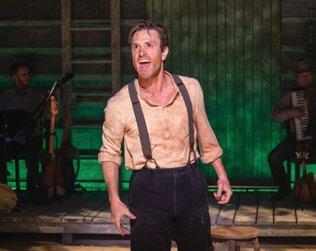
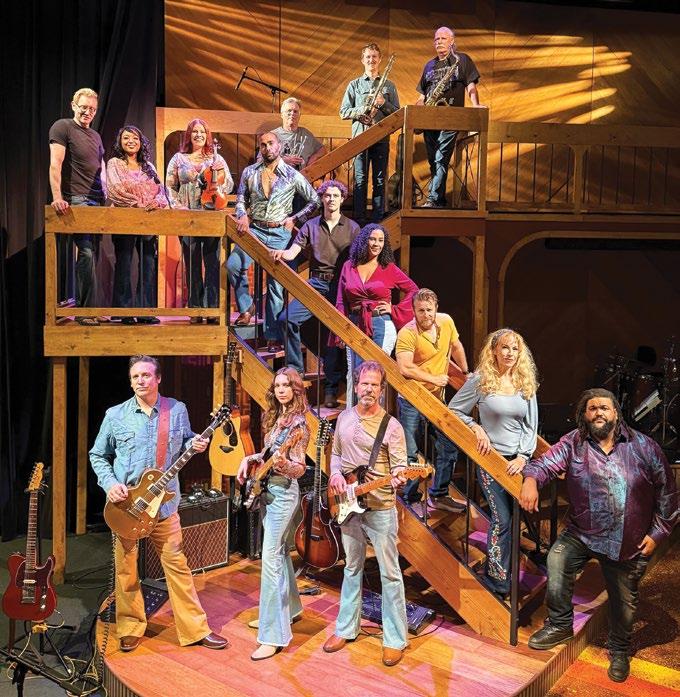
LAMB’S PLAYERS: “The ’70’s! The Golden Age of the Album” cast.
lambsplayers.org
Lamb’s Players is taking a sentimental journey back to the 1970s with “The ‘70s! The Golden Age of the Album.” If you’re a fan of the era — or just looking for a good time with vintage music — head to Lamb’s Coronado home before it ends on Sept. 14
aquarium.ucsd.edu
Birch Aquarium’s “Living Seas” exhibition – an immersive experience designed to wow visitors – takes you on an unforgettable voyage through the Pacific Ocean. On July 5, “Shark Summer” swims into town, offering a variety of shark-related activities through Aug. 10
theoldglobe.org
The Globe’s Shiley Stage is reviving one of the funniest show-biz comedies ever written. “Noises Off” uncovers everything that can go wrong in live theater and combines them into a hilarious play that keeps the laughs coming at lightning speed. The show runs July 6-Aug. 3
The Globe’s White Theatre is featuring the world premiere of “The Janeiad,” a new poetic and emotion-charged tale set in modern-day Brooklyn – with a nod to “The Odyssey.” The play will wind down its run on July 13.
The Globe’s outdoor Festival Stage will continue its summer season on July 27 with Shakespeare’s “The Comedy of Errors,” a mix of madcap comedy and merry mayhem. In this uproariously funny play, mistaken identities and confused lovers propel the zany plot. The classic comedy will keep audiences rolling in the aisles through Aug. 24
northcoastrep.org
North Coast Rep is ready to show off the Tony Award-winning musical, “A Gentleman’s Guide to Love and Murder,” a brilliant musical comedy that makes merry with an intricate murder plot and boasts an imaginative score. The results are pure fun and exhilarating entertainment. The show will light up the stage from July 16 through Aug. 17
lajollaplayhouse.org
Beginning Aug. 19, La Jolla Playhouse will be staging “The Heart,” a worldpremiere musical set in San Diego over the course of 24 suspenseful hours accompanied by a unique, thrilling electronic score.


broadwaysd.com
Broadway San Diego will be presenting the world’s most popular musical, “Les Misérables,” to open its 48th Season on Sept. 16
sdnhm.org
The San Diego Natural History Museum is featuring “Amazement in the Basement,” a paleontology exhibition consisting of an array of specimens from their collections.
by Marnie Macauley marniemacauley@gmail.com
My dear San Diegans:
Fire up the kosher barbecues, claim your best beach spot (don’t forget sunscreen), and brace yourselves for a sky pop-popping with fireworks because July 4 isn’t just a holiday; it’s America’s grand birthday bash!
But, while we’re soaking up the sun and relishing the buns, let’s pause for a beat and dive into a part of our history that rarely makes it onto a parade float: the Jewish firebrands, financiers and fearless fighters who helped turn America from colony to country. These unsung heroes weren’t just witnesses to history; they were making it against all odds.
Today, let’s give a nod to those who set the revolution ablaze: the rebels, the risk-takers and the unexpected architects of liberty. Because, San Diego, if there’s one thing we know about, it’s how to celebrate — freedom, resilience and a damn good story.
Spy rings, smugglers & secret Yiddish messages: the Jews of the revolution
You probably know Haym Solomon— the Jewish financier who practically bankrolled the Revolutionary War. But did you know his life was less easy
Because, San Diego, if there’s one thing we know about, it’s how to celebrate — freedom, resilience and a damn good story.
street and more prison stints, espionage, lawsuits and poverty at death? Or that a tiny Dutch island, run by mostly Jews, was a key chess piece in winning the war? And then there’s Abraham Wagg—British-born, colonial Jew, selfappointed peacemaker, pen-wagging at high British officials like an overeager diplomat.
But here’s the bigger picture: We Jews were only 2,500 strong in colonial
America, yet our role in the revolution was disproportionately massive. More than financing the war, our involvement changed Jewish standing in the New World. Unlike Britain, where Jews had to take a Christian oath to serve as officers, here in America, we ranked as high as colonel and fought, funded, privateered and smuggled supplies. No legal barriers. No second-class treatment. Just Jews standing shoulder-to-shoulder in the fight for freedom.
The Revolution’s Unsung Players
These weren’t just names in history books. These were men who risked it all—sometimes with questionable luck (hello, Benedict Arnold’s ex-bestie), sometimes with zero repayment (spoiler: if you loaned the U.S. government money back then, you got bupkes).
David Franks
A patriot...with a reputation problem. Jailed for sedition, unfairly linked to Benedict Arnold and nearly got himself exiled. Yet, somehow, ended up shuttling messages between Franklin, Adams, Jefferson, and Jay. Jefferson called him “light, indiscreet, active, honest, affectionate”— which, frankly, sounds more like a puppy than a diplomat.
Advice continued
Mordecai Sheftall
Committee organizer and smuggler of gunpowder to Washington’s army. The governor of Georgia ratted out the Jews to London, whining that “they must not be allowed to return.” Result? The Disqualifying Act of 1780, barring them from political activity. Nice try.
Philip Moses Russell
No medical training? No problem. Enlisted as a surgeon’s mate anyway, cutting his way through Brandywine and Valley Forge while battling exhaustion and bad eyesight. Washington himself gave him a shoutout for his service.
Hyam Salomon
The OG Jewish financier. Raised cash, smuggled and literally saved the revolution from bankruptcy. Even loaned




money to James Madison—who later called himself “a pensioner on the favor of Haym Salomon, a Jew broker.” And how did the U.S. government thank him? They didn’t. His heirs got nothing.
The Dutch Caribbean island that moved smuggled goods through the British blockade. Jewish merchants sent uniforms, rifles and gunpowder to the colonials until the British caught on and retaliated. Oh, and when the British intercepted a copy of the Declaration of Independence headed to Amsterdam, they also found a letter with it. The problem? It was written in Yiddish. They thought it was secret code.
We fought. We funded. We smuggled. We sacrificed. And in the process, we helped build the foundation for Jewish






Specializing in:
• Companionship
• In Home Support Services & Maintenance
• Meal Preparation
• Assistance with Activities of Daily Living
We pride ourselves in pairing the highest quality caregivers with our clients. Our care team will work with you to develop a client-specific care plan, tailored to meet your needs. Personalized Care For Enhancing Quality Of Life
Ben Barth
Owner/Director of Operations
• Transportation Assistance
• Medication Administration Assistance
• After Surgery Care
• Respite and Relief for Caregivers
CA State Certified HCO & RCFE Administrator (619) 788-4459 | ben nonashomecare.com
inclusion in American society. No second-class treatment. No forced oaths. Just Jews doing what Jews do best: showing up, fighting hard, and being the backbone when it mattered most. A
Marnie Macauley, MS, Columbia University –Creator of Strategic Relationship Thinking (an innovative way to solve problems), writer, editor, author, lecturer, clinician, and administrator – is a straight-shooter, with a distinctive voice and take on the world in her columns, features and books. She has been nominated for both an Emmy and a Writers Guild award.


We Are San Diego’s ONLY All-Jewish Mortuary Serving the community for over 40 years.
✡ Proudly Serving Jewish Families For Over 40 Years.
✡ Family Owned and Operated for Three Generations.
✡ Serving all Jewish Families, Orthodox, Conservative, Reform.
✡ Affiliated or Unaffiliated with a Synagogue.
✡ We can assist with At-need or Pre-need funeral planning. Purchasing cemetery plots or burial arrangements anywhere.
✡ We are here to help, call or email with any questions.
El Cajon Blvd., San Diego





Joseph Lipschitz – La Jolla
Harvey Shapiro – Vista
Ruth Feder – Encinitas
Mark Maisel – San Diego
Robert Resnik – Solana Beach
Joseph Michaelson – Redlands, CA
Paul Schultz – La Jolla
Sandra Dimenstein – La Jolla
Suellen Solomon – San Diego
Alex Pascal – La Jolla
Frank Sommers – San Diego
Moshe Rotman – Temecula
Jacob Caspi – Encinitas
Howard Friedman – San Diego
Shirley Linder – Chula Vista
Ricki Rosenthal – San Diego
Edward Janon – La Jolla
Allan Kleinman – Seal Harbor, ME
















Comradeship



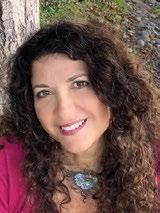


Beautiful downtown Vista has a 2000 sq.ft fully equipped 5 operatory Dental Office for rent. The complete building is also available for purchase, which has a 1100 sq.ft. space which is presently rented and has a lease. Total building is 3100 sq.ft. It also includes a spacious patio. For more information please call (760) 390-4171. Please leave a message if someone does not answer.

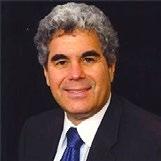




by Grace Gilson, JTA NEWS
All of the participating Jewish organizations in San Diego’s Pride festival this year have pulled out of the celebration over antiIsrael R&B singer Kehlani’s headline performance, citing “serious safety concerns.”
Eight local Jewish groups and synagogues, including the Jewish Federation of San Diego and AntiDefamation League of San Diego, announced that they would be withdrawing from the festival after its organizers said they would not cancel the singer’s headline performance despite concern from Jewish groups.
“In light of San Diego Pride’s decision to allow musical artist Kehlani to remain
a headliner at this year’s Pride Festival despite [her] repeated amplification of violent antisemitic rhetoric, all participating Jewish organizations and synagogues — many of which have marched with, volunteered for or supported Pride for years — will be withdrawing from the 2025 event due to serious safety concerns,” the letter read.
In the Jewish group’s announcement, they cited the violent terror attacks in recent weeks in Boulder, Colorado, and Washington, D.C., writing that the attacks underscore the “dangerous consequences of unchecked antisemitism in public spaces.”
“Now more than ever, Pride should be a celebration of inclusion and solidarity,
not a platform for divisive voices that incite hatred and violence,” said Heidi Gantwerk, president and CEO of the Jewish Federation of San Diego County, in a statement. “As we’ve seen in D.C. and Boulder, when antisemitism is ignored or tolerated, it fuels a culture that leads to violence. We cannot wait for tragedy to strike our own community — again — before we act.”
“A celebration of one group should never come at the expense of another. There is no pride in exclusion — and when any marginalized group feels unsafe, we all lose. San Diego has no room for hate.” A


